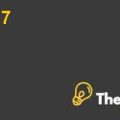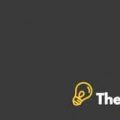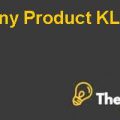
PART A
REVENUE BASED AMORTIZATION METHOD:
Revenue Based Amortization Method is analyzed with the volume of the sales relating to rate/ price linked with the amortization charges. It is a sales based method which apportioned over the year of that asset. There is some characteristic which is as follows
- Its correlates with cost and results
- The rate of the amortization relates to life of Life
Basically Revenue is working with the estimated quantity / volume of the agreements relates with toll rates of concession. One thinks is more for the disadvantage of this method is does not comply with IASB requirements.
According To IFRS
“We defined revenue-based methodologies as those in which quantity (volume) and price interact in determining the charge for amortization or depreciation.”
A method based on ‘sales’ or
‘Revenue’ is often classified as a ‘production’ method of apportioning
In terms of the assets relative:
(I) Productivity; and/or
(ii) Operation. (Meeting, 2012)
Current Standard
Under the Current Standard, entities could not apply to Revenue based amortization methods for intangible assets with a finite useful life, because of the new amendment in the AASB 138. There was difference IAS 16 and IAS 38 and AASB body, they are involved in the amortization of assets, because the future consumption benefits relate to the assets which are ended with its periods. The probability of future expected economic benefits using reasonable supportable judgments of the management with the useful life. Basic Models used in amortization are as follows
(i) Cost Model
(ii) Revaluation Model
Cost Model:
An intangible asset shall be carried at its cost less any amortization and any Impairment losses with initial recognition.
Revaluation Model:
After first Model; revalued amount, being its fair value at the date of the revaluation less any previous accumulated amortizations and any previous Accumulated impairment losses. For the purpose of revaluation the fair value will be the current market of the environment. Revaluation shall be based on the regulatory basis of the materiality of the circumstances. There are many technical sides which have identified in the standards of the accounting bodies which are internationally followed
According to the AASB 138 under the current formats of the Guidelines which are as follow:
“The depreciable amount of an intangible asset with a finite useful life shall be allocated on a systematic basis over its useful life. Amortization shall begin when the asset is available for use, that is, when it is in the location and condition necessary for it to be capable of operating in the manner intended by management. Amortization shall cease at the earlier of the date that the asset is classified as held for sale (or included in a disposal group that is classified as held for sale) in accordance with AASB and the date that the asset is derecognized. The amortization method used shall reflect the pattern in which the asset’s future economic benefits are expected to be consumed by the entity. If that pattern cannot be determined reliably, the straight-line method shall be used. The amortization charge for each period shall be recognized in profit or loss unless this or another Standard permit or requires it to be included in the carrying amount of another asset.”
(Intangible, 2014)
Factors:
There are two major factors which influence entity`s accounting policy choice for the amortization of intangible assets with finite useful lives are as follows:
(i) Straight Line Method
(ii) Diminishing Method
These methods are used for selecting on the basis of the expected pattern of consumption of the expected future economic benefits with the asset and it’s applied consist from time to time, until and unless, there are changes in the expected pattern of consumption of that future economic benefits.
Straight Line Method:
Straight Line Method uses for the amortization of the intangible asset with the limits of the finite useful life, throughout the future benefit consumption. It amortized annually with respect to the purchasing of the Assets.
Diminishing Method:
Diminishing Method 2nd factor of choice which influence the accounting policy. It intends to charge of the amortization of the assets which reflect criteria of the future consumption with declining with percentages of the assets. It solely relates with amortized of the each particular asset consumption.
Explanations:
These both choices suitable with respect to the industry and the environment of the country. Most countries are using intangible assets with respect to the straight line method according to their stability and reliability of the area. According to the accounting procedures, Amortization is usually recognized in profit or loss. However, sometimes the future economic benefits embodied in an asset are recognized with the purchase of the assets. The residual value of the asset will be zero in most cases, unless there is no changes in the market environments and commitment with a third party related transaction of the assets..................
This is just a sample partial case solution. Please place the order on the website to order your own originally done case solution.









